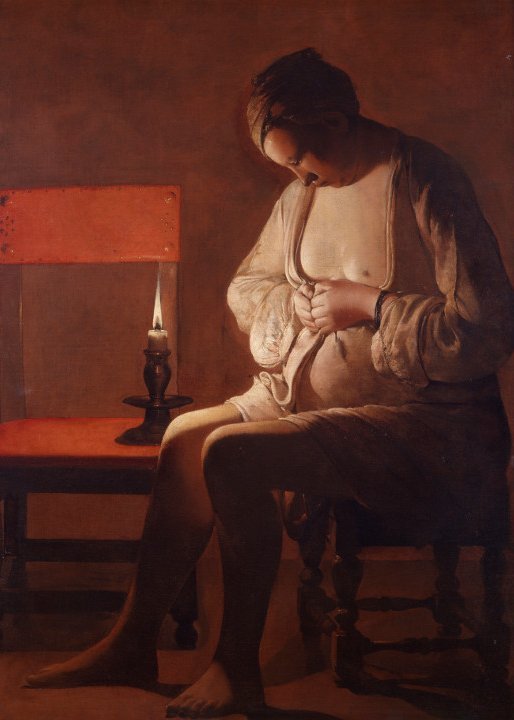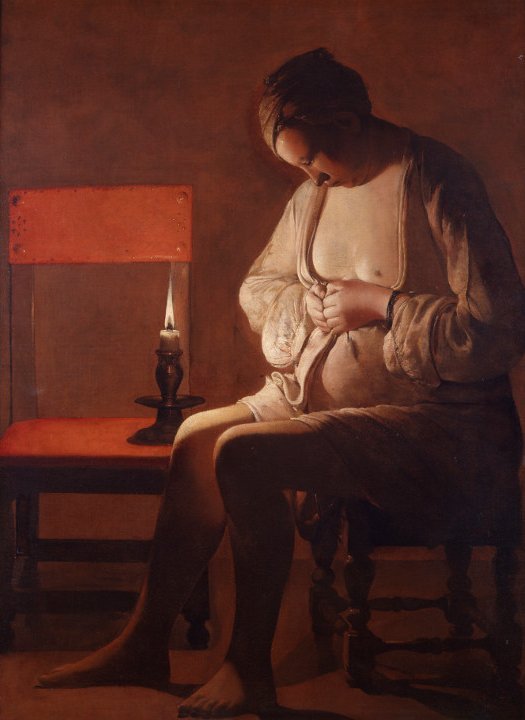Georges de La Tour (1593, Vic-sur-Seille - 1652, Lunéville)
Vers 1632- 1635
Huile sur toile
H. 121, L. 89 cm
Inv. 55.4.3
Achat, 1955
La Femme à la puce (Woman with a Flea) is one of Georges de La Tour's greatest masterpieces, because of its subject, which is still mysterious, the quality of its composition, light and colour, and its simplicity, which borders on spiritual meditation.
It is not easy to interpret: none of the details refer to a precise episode from the Bible, which the painter illustrated many times; does the work represent Mary Magdalene, the Virgin, a woman of the world caught in her strictest intimacy or, on the contrary, a debased servant, worn out by the service of others? The jet bracelet around the model's left wrist, a poor man's jewel, argues in favour of the latter. The woman is crushing a flea between her fingernails, a rudimentary gesture of hygiene and a sign of infinite misery. Although this theme is not uncommon in 17th-century painting, its harshness has been linked to the dark times in Lorraine at the time La Tour painted his canvas, probably in the late 1630s, at the height of the Thirty Years' War.
This work is even more fascinating in that it combines the raw realism of the female figure with a strikingly modern style: the nudity of the background, the unity of the light and the geometry of the forms all contribute to a bold stylisation. In the bare space on the left-hand side of the painting, the lit candle illuminates the entire canvas, drawing the eye and focusing attention. The soft light that emanates from it lends the work an atmosphere of calm, even contemplation. Far from indulging in a mere description of the visible, Georges de La Tour invites his audience to go beyond the subject of his work by suggesting what we cannot see: the depth of the human soul, in all its splendour and destitution.


